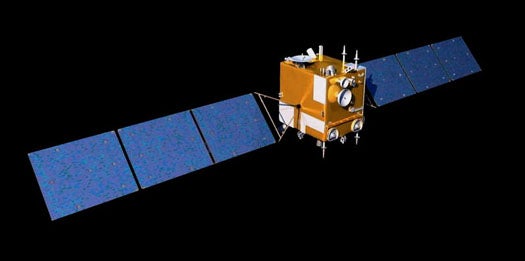China’s Chang’e-2 Craft Is Done Orbiting the Moon, Now Taking Off From There for Interplanetary Space
Boldly going where no lunar orbiter has gone before

China jumped into the space race a few decades too late for the original moon race, but the State Administration of Science, Technology, and Industry for National Defense (SASTIND) is feverishly working to close the space technology gap with Russia and the United States. As part of that effort, China’s Chang’e-2 moon orbiter left its moon orbit today and set a heading for interplanetary space, with a destination more than 930,000 miles from Earth.
Chang’e-2 is China’s second lunar orbiter and by April 1 of this year had completed all of the tasks it was designed to carry out over its planned six-month lifespan. So SASTIND researchers gave it two more objectives, including snapping images of the lunar poles and dipping into a low orbit to grab some closeups of the Bay of Rainbows, a potential future landing site for Chinese moon missions.
But Chang’e-2 was still humming along on ample fuel reserves after these two additional tasks were also ticked off the checklist. So scientists decided to break orbit and head out deeper into space. The journey to its final destination will take about 85 days.
And what will Chang’e-2 be examining out there? Nothing really. But SASTIND researchers on the ground will be examining Chang’e-2. China has expressed a determination to develop its own home-grown space capabilities rather than lean on NASA, the ESA, or Russia. This trip will mark the furthest a Chinese satellite has traveled into space, and it will give scientists a chance to probe the challenges in communication, data downlink, and control that arise when vast distances separate a spacecraft and the home planet.
Given China’s ambitious space schedule, these things need to be sorted out sooner rather than later. The People’s Republic wants a moon rover on the lunar surface by next year, and a second rover shortly thereafter, which will be capable of collecting samples and returning to Earth with them. Arrival of that mission back on Earth is slated for 2017, just one decade after China’s launched its first lunar orbiter.